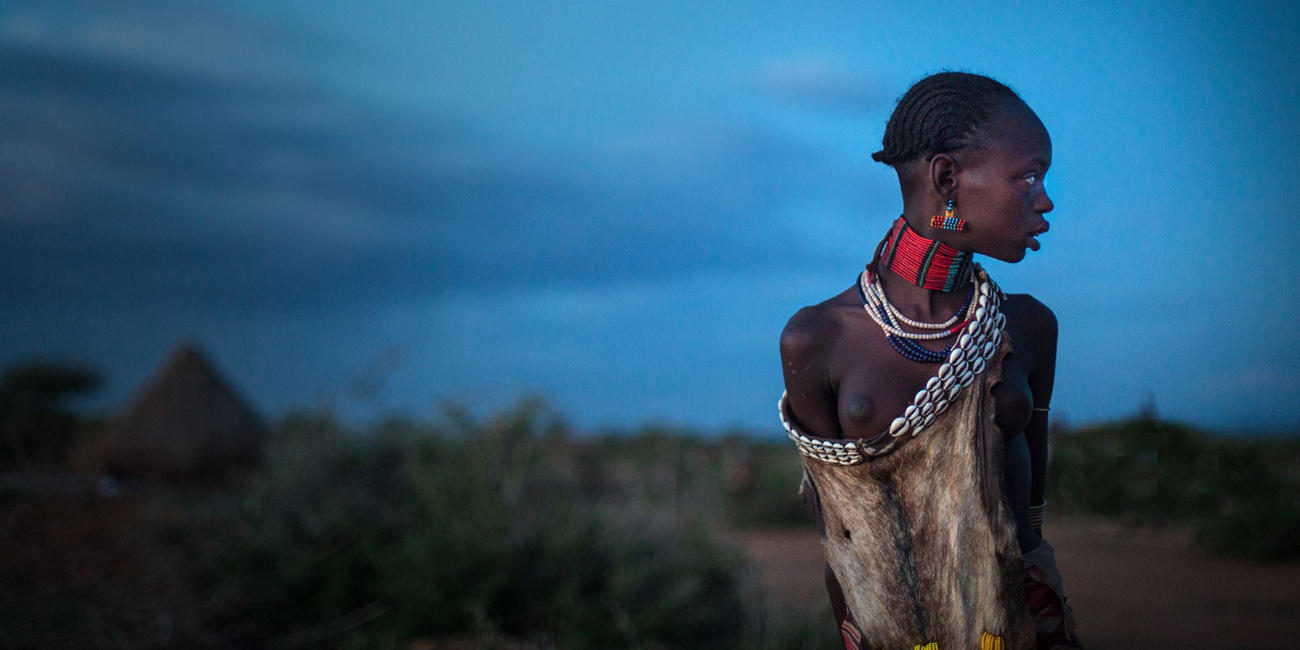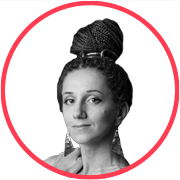
Einat Klein: “Africa is Not Just About Colourful Necklaces and Naked Breasts”

I studied journalism in Kiev, then moved to Israel. The language barrier was the first major difficulty, so I started working as a photographer for a news agency. I was shooting military conflicts, rallies, the army. Even now I sometimes get commissions from the press-service of the Army of Israel to shoot military trainings.
The general availability of photo equipment has changed the world of photography. I used to have a film camera — so I developed, printed, dried and glossed. But film only has 36 frames, that’s all you could depend on. Now you can take thousands of images and get pretty good shots even with inexpensive cameras that you can right there post to Facebook and get your likes. This is the era of Vasya Pupkin, professional photographer (Vasya Pupkin is a conventional name for anybody with mediocre talents/knowledge/personal qualities. In this case: a Nobody with a Camera, translator’s note).
A firing tank is easy to photograph — you don’t need to think of the way it looks in the image. But if you work with landscape photography or portraits you need Photoshop and Lightroom. I was lucky, the portraits that I am doing don’t need retouching of the skin, or any defect elimination — after all — I am not a wedding photographer. The face of a girl from an Ethiopian tribe is beautiful without any gimmicks. I am looking for naturalness, so that’s fine.
{ “img”: “/wp-content/uploads/2015/02/klein_01.jpg”, “text”:”” },
{ “img”: “/wp-content/uploads/2015/02/klein_02.jpg”, “text”:”” },
{ “img”: “/wp-content/uploads/2015/02/klein_03.jpg”, “text”:”” },
{ “img”: “/wp-content/uploads/2015/02/klein_04.jpg”, “text”:”” },
{ “img”: “/wp-content/uploads/2015/02/klein_05.jpg”, “text”:”” }
There is so much to shoot everywhere except Europe. Maybe I lack fantasy and professionalism to see something interesting there, but I am inclined to think that those parts are the field of work for architectural photographers only. Africa and the Middle East are another matter. One would need to be a complete failure to miss shooting something worthy to be called a masterpiece in 10-20 years of work.
Audacity is a prerequisite in a photographer. But one needs to know how to respect certain limits. There is a village in Ethiopia populated by incredibly beautiful girls. Photographers ask them to pose this way and that, and the girls do that in an easy and lighthearted way for a moderate fee. The locals in Ethiopia have a totally different idea of sexuality — what appears extravagant to us to them is totally natural — like posing with a book on a couch. Once a photographer was shooting a girl from that village for quite a long time but then refused to pay. Allegedly he had been shooting a tree but not the girl all that while. The girl knew she had been cheated, and she cried but couldn’t prove anything. The cost of all that drama was about 1$.
{ “img”: “/wp-content/uploads/2015/02/klein_06.jpg”, “text”:”” }
In Ethiopia people express their emotions and communicate in a totally different way from what we are used to. They are much more sensual and much more open. There you can get in touch with the genuinely human. That is frightening at first, but after you get used to it, you can hardly do without it. In the Omo river valley there are villages frequented by tourists and photographers. But you can also go further and become the first white human the locals will have ever seen. I once experienced it when a kid got so frightened of my skin color he went into hysterics. That was a thrill!
It is not photographers and tourists who will change the life of those tribes. Corporations will do it, road construction, discovery of oil, diamonds, iron, water and other resources. Tourism is but a drop in an ocean, but the technical progress cannot be stopped, so as soon as things like available medical care, education, communications and roads come to those parts of Africa, the last natives will take off their clothing made of feathers and wild animals’ skins and throw away their dishes made of clay. They will become the likes of ourselves. A beautiful image will disappear, and the world will become greyer and more monotonous. But together with the exotics, this world will improve childhood mortality, and life expectancy will grow. At present the average life expectancy in Ethiopian tribes is 30.
Every year the men from the Bodi tribe stop working for a few months. They sit in their huts, and the women feed them milk, meat and fat. During that period the men significantly gain weight, sometimes up to 100 kg. On an appointed day they come out of the huts and a festive selection of the fattest among them begins. It is the feast of fertility and welfare. The winner gets the chieftain’s blessing and becomes an honourable member of the tribe.
{ “img”: “/wp-content/uploads/2015/02/klein_07.jpg”, “text”:”” },
{ “img”: “/wp-content/uploads/2015/02/klein_08.jpg”, “text”:”” },
{ “img”: “/wp-content/uploads/2015/02/klein_09.jpg”, “text”:”” },
{ “img”: “/wp-content/uploads/2015/02/klein_10.jpg”, “text”:”” },
{ “img”: “/wp-content/uploads/2015/02/klein_11.jpg”, “text”:”” },
{ “img”: “/wp-content/uploads/2015/02/klein_12.jpg”, “text”:”” }
Female circumcision is one of the popular rituals in Ethiopia. The procedure renders the woman a cripple. If the girl doesn’t come from a distant wilderness she might be lucky to escape it. She will go to school and might be able later be able to flee to a city. I have heard of a girl who refused to undergo circumcision and had to leave her village. If she comes back, she will be killed.
Minghi is a tradition of the Omo river valley in Ethiopia.. It is the common name for children who can bring bad luck to their tribe. A child may be considered minghi if its eyes are fare, if the first tooth that comes out is an upper incisor, or if it has been conceived before certain rites were performed, even if the parents are married to one another. There might be a lot of reasons. Such children are put to death. African culture is not just about colourful necklaces and naked breasts. A huge number of traditions result in death or mutilation.
Ethiopia has its own idea of beauty. The Mursi women implant a 20 cm diameter saucer into their lower lip. To make this possible not only do they pierce the lip, but knock out the lower teeth as well. The “embellishments” that mutilate and cripple the women are a gift from the West. In the Middle Ages the tribes mutilated their women to save them from slavery. The uglier the woman the lower her cost. Hundreds of years of slave trade converted forced mutilation into an indicator of good looks.
Traditions are inert and disappear slowly. 90% of the population of the Omo river valley are influenced by the elder generation. At age 12 to 13 girls get married, and at 15 they have children. At that age they are hardly mature enough to offer any resistance to the older generation.
{ “img”: “/wp-content/uploads/2015/02/klein_13.jpg”, “text”:”” },
{ “img”: “/wp-content/uploads/2015/02/klein_14.jpg”, “text”:”” },
{ “img”: “/wp-content/uploads/2015/02/klein_15.jpg”, “text”:”” },
{ “img”: “/wp-content/uploads/2015/02/klein_16.jpg”, “text”:”” }
For every thousand of images there will hardly be one where they are not posing. In order to take a picture of these natives doing their daily chores in a natural way you might need to live among them until they get used to you and stop noticing you. Big holidays and market days are the only exceptions. In a large crowd of people their involvement in the work they are doing redirects their attention from the camera, making the photographer almost invisible. This works for the wild tribes of Ethiopia; this works for central Jerusalem.
On Theophany day on the bank of the Jordan river at the presumable site of Jesus Christ’s own baptism some 10,000 people gathered this year. Culmination of the feast was the sanctification of water by Patriarch of Jerusalem Theophilos III; during the ceremony a vat of water is on the altar, among candles and incense burners. Having completed the ceremony of sanctification, the patriarch starts descending to the river, and the vat is left unattended. And so, on this holy and solemn occasion that they have gathered there to celebrate, thousands of people rush to the vat trying to get some water from it into a plastic bottle or dip an article of clothing into it. They get onto the table with their feet, frantically stepping on the patriarch’s flags, church utensils, upsetting everything on their way to the water vat that only half an hour ago was the paramount of sanctity. Despite the fact that I shoot this feast every year, it is at this moment that I feel really scared, more scared than on the Gaza border, more scared than in the midst of a massive rally.
Traditions and rites are of course interesting, but the people themselves are much more interesting: the eyes, the faces, the gestures. One day before or one day after you will never get this gaze or this attitude from a person. As they get into a state of religious affectation, people seldom appear humane, more often it is the contrary. You are more likely to see ecstasy and brutality on their faces than inspiration and piety.
Irrespective of the fact where people live, there are three sentiments equally important for everybody. In the first place, love for the children. Certain traditions are a rare deviation. Also, all the people share love for life. Whether they are rich or poor, no matter. One can be driving a posh car or walking barefoot, eating a delicious banana or returning from Tiffany’s with an expensive ring — the joy that one feels is the same in these two different situations. It will be a passing, an ephemeral one, but it will be there. The third sentiment is the wish for a better life.
{ “img”: “/wp-content/uploads/2015/02/klein_17.jpg”, “text”:”” },
{ “img”: “/wp-content/uploads/2015/02/klein_18.jpg”, “text”:”” },
{ “img”: “/wp-content/uploads/2015/02/klein_19.jpg”, “text”:”” },
{ “img”: “/wp-content/uploads/2015/02/klein_20.jpg”, “text”:”” },
{ “img”: “/wp-content/uploads/2015/02/klein_21.jpg”, “text”:”” },
{ “img”: “/wp-content/uploads/2015/02/klein_22.jpg”, “text”:”” },
{ “img”: “/wp-content/uploads/2015/02/klein_23.jpg”, “text”:”” },
{ “img”: “/wp-content/uploads/2015/02/klein_24.jpg”, “text”:”” }
New and best




